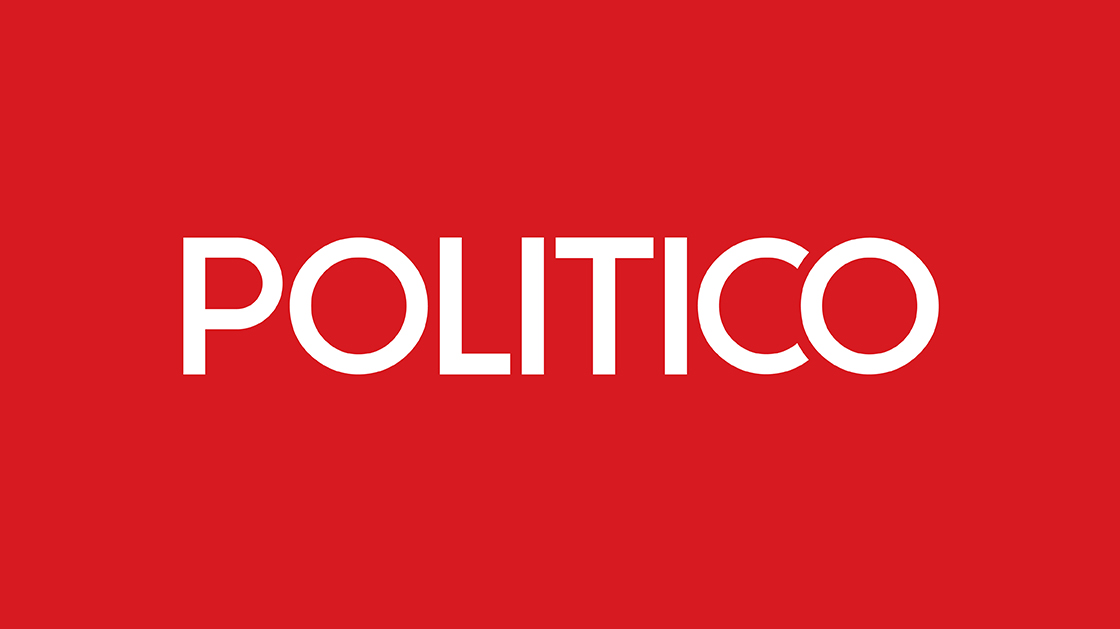Editor’s note: Morning Money is a free version of POLITICO Pro Financial Services morning newsletter, which is delivered to our subscribers each morning at 5:15 a.m. The POLITICO Pro platform combines the news you need with tools you can use to take action on the day’s biggest stories. Act on the news with POLITICO Pro.
A persistent theme has crept into financial policy discussions lately: the need to reduce the costs paid by the U.S. government on its massive debt load.
That goal was one of the administration’s justifications for scaling back a key bank regulation. It was part of the sales pitch for Washington’s endorsement of crypto tokens known as stablecoins. And it’s one of President Donald Trump’s main cudgels against Federal Reserve Chair Jerome Powell as he presses for lower interest rates.
Policymakers weren’t spotlighting the cost of financing the debt until quite recently, and it’s a shift worth paying attention to, with interest payments now edging out spending on defense and Medicare. Those ballooning costs could eventually prompt a change in how the U.S. approaches debt management, with implications for the Treasury yields that help determine asset prices across the global economy.
The debate is not only over how much the government is borrowing, but how it borrows the money itself.
If the Treasury Department were to issue less longer-term debt — one of the ideas being discussed on Wall Street — it could lead yields to fall as the remaining securities become more valuable, something that could theoretically help lower rates on mortgages or other loans. Another proposal is for the Fed and the Treasury to coordinate much more closely on debt issuance.
Trump himself has openly mused about borrowing in a way that saves more money — that is, by issuing more short-term debt.
“What I’m going to do is, I’m going to go very short-term, like six months, seven months, eight months,” Trump told reporters in June, “wait until this guy [Powell] gets out, get the rates way down, and then go long term.”
For now, Treasury hasn’t changed its plans for what type of debt it’s issuing, despite criticism from Secretary Scott Bessent before his time in government of how his predecessor, Janet Yellen, handled the matter.
Josh Frost, who oversaw debt management at Treasury under the Biden administration, said the department should always be watching out for larger, structural shifts in demand but warned against “fine-tuning.” Changing the government’s issuance plans too often could counterproductively push up yields, as investors start demanding a premium to guard against policy uncertainty, he told MM.
But as fiscal worries come increasingly into focus for investors, the administration might be tempted to alter the issuance schedule.
“How bad would things have to get for them to turn to this as an option?” Frost said. “My guess is you’d need to see a move in rates that was larger than we saw in April [when Trump unveiled his new tariff regime] and hard to explain by changes to the economic outlook.”
It’s not a simple prospect, though. When Treasury unexpectedly discontinued the 30-year bond at the end of October 2001 (back when the country’s fiscal picture was much rosier after years of surpluses), yields initially plunged, but the effect was short-lived.
Still, even marginal decreases in rates might be alluring.
There are two sides of the coin in how government institutions shape which Treasury securities are available to the public: one, Treasury decides what kind of debt to issue — bills, which pay out in a year or less; bonds, which mature in longer than 10 years; or notes, which fall in the middle.
And two, the Fed decides which of those assets to buy, a tool that it has used in recent economic downturns to help lower interest rates beyond just the short-term rates that it more directly influences.
Since the 2008 financial crisis, the Fed has been the more important determinant of the Treasury yield curve, as it has taken a lead role in steering the economy. But now, the supply of Treasuries to the market is becoming a significant driver.
The Fed part of the equation holds some intrigue as well. In an interview on CNBC last month, former Fed board member Kevin Warsh, one of the frontrunners in Trump’s Fed chair race, floated the idea of coordination between the central bank head and the Treasury secretary, where the Fed would lay out a target size for its asset holdings and the Treasury would lay out an issuing calendar. That way, “markets will know what is coming,” and it would help bring down borrowing costs, he said.
It’s an idea that, while not entirely clear, might interest the community of investors who finance the U.S. government debt and could conceivably help lower yields (though it’s worth noting: baked into Warsh’s thinking is that he wants the Fed’s asset holdings to be much smaller, so he might also be seeking coordination to make that process less disruptive to yields).
But some on Wall Street might also be alarmed by the potential for diminished independence for the Fed.
At his press conference last month, Powell flatly rejected the notion of the Fed taking into account how much the debt costs for the U.S. government, underscoring that the central bank’s mandate is price stability and maximum employment.
“We don’t consider the fiscal needs of the federal government. No advanced-economy central bank does that,” Powell said. “If we did do that, it would be good neither for our credibility nor for the credibility of U.S. fiscal policy.”
Expect this conversation to linger.
Warsh’s idea “signals that we’ve entered a new phase in the debt-management discussion, and when the Treasury works through all the other things on their docket, the question of how to minimize costs over time is going to be a very legitimate debate” over the next few quarters, said Lou Crandall, who tracks these matters closely as chief economist at research firm Wrightson ICAP.
Happy Friday — Hope you’re enjoying Morning Money: Capital Risk, our new Friday edition of MM where we’re aiming to look around the corner on political and policy developments that have market implications. What should we be watching? Send tips and feedback to Victoria at [email protected] and Sam at [email protected].
Labor will release import and export price data for July at 8:30 a.m … Retail sales data for July will be released at 8:30 a.m. … Industrial production data for July is out at 9:15 p.m. … University of Michigan’s consumer sentiment survey will be released at 10 a.m. …
Key measures of inflation are heating up. The labor market looks like it could stall. And consumer spending — which represents around two-thirds of the U.S.’s annual gross domestic product — is slowing down.
The risk to earnings for retailers and other consumer-facing businesses is if a weaker jobs market and escalating inflation pushes Americans to pull back on spending even more. And that’s especially true for firms whose customers skew toward lower income.
New research from the Bank of America Institute found that the gaps between the haves and have-nots have widened in recent months amid the uncertain economic backdrop. Annual wage growth among those with lower incomes dropped to 1.3 percent year-over-year in July, while bigger earners posted 3.2 percent growth.
That corresponded with similar changes in spending; low-income household spending was basically flat last month, while it expanded for the middle and upper class.
BofA’s findings are intuitive, of course. The more you have, the more you spend. But the changes to the social safety net coming from the “Big Beautiful Bill” suggest that certain low-income households will face even more strain in the months and years ahead. The Congressional Budget Office on Monday predicted that 2.4 million Americans will lose their Supplemental Nutrition Assistance Program benefits under the legislation’s new work requirements (hiring rates are now well below pre-pandemic levels). The cuts to Medicaid and elimination of premium tax credits for Affordable Care Act enrollees are also expected to push millions of people out of health coverage.
As those policies take effect, the question will be if the lifestyles of the rich and famous — which have propped up overall consumer spending since 2022, according to new Boston Fed research — will be enough to support the economy’s continued expansion. The CBO has also projected that the megabill will boost annual incomes for the richest by $13,600.
Depending on how they spend it, it might just be enough.
Inflation is ticking up from tariffs, and growth has slowed. But Adam Posen, president of the Peterson Institute of International Economics, argued to MM that tariffs are hurting the economy even more than it seems.
“AI-led investment and spending is pushing up the economy,” he said. “Trump-led deregulation and redistribution is pumping up the stock market and profits. So, the stagflation is net of that offset.”
He also said profits are down in industries, like autos, where they import inputs, and industries that depend on migrant labor “have been flat-lining in terms of growth.”
“The economy hasn’t cratered, but it has been meaningfully worse,” he said.
But he has been surprised that there hasn’t been more damage as a result of Trump’s immigration crackdown. “There are some signs consistent with damage, but not yet that big,” Posen said.
The data might not be telling the whole picture, he added. But “it may just be that my/our analysis is wrong on migration impact,” he said.
— The Trump administration is considering buying a stake in Intel Corp., Bloomberg News reports, citing people familiar with the plan.
— San Francisco Fed President Mary Daly tells the WSJ that she doesn’t see a need for a half percentage point rate cut in September.
— Sens. Ron Wyden (D-Ore.) and Elizabeth Warren (D-Mass.) have launched a probe into Cantor Fitzgerald & Co. over what they say are potential conflicts of interest and insider trading, our Ari Hawkins reports.
— U.S. producer prices saw their biggest jump in three years in July, Reuters reports.
— Bessent says the Trump administration could buy Bitcoin at some point, maybe, via Bloomberg News.







